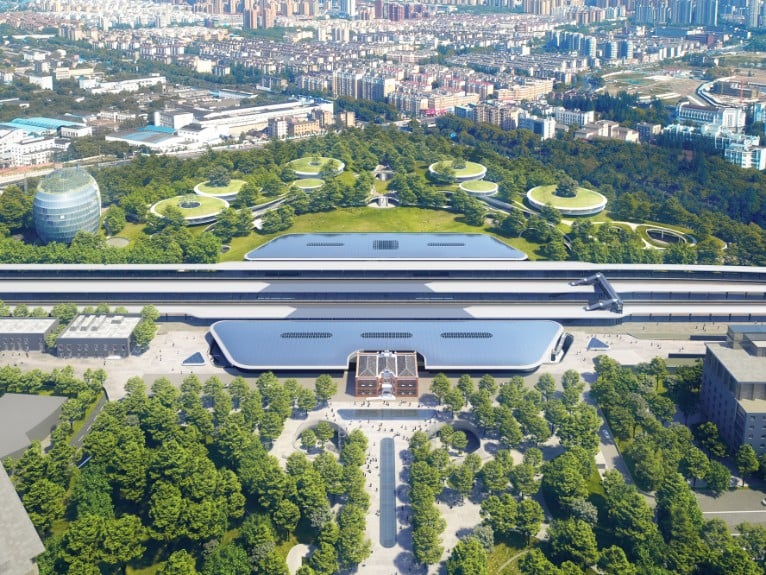
Led by Ma Yansong, MAD architects unveils their design for Jiaxing’s “Train Station in the Forest.” Having begun construction at the end of 2019, the project is expected to be completed by July 1st. 2021.
The train station is situated in the center of Jiaxing, an interconnected city in southeast China close to Shanghai, Hangzhou, and Suzhou. A key city for several major industries, Jiaxing is referred to as the “home of silk” and the “land of milk and honey.” In 1921, the First Party Congress of the Communist Party of China was held in Jiaxing, which led to the founding of the Party.
The project brief covers an area of 35.4 hectares, encompassing Jiaxing Train Station, the plazas to the north and south, and a renovation of the adjacent People’s Park. Before the renovation, the existing station had reached its maximum capacity. In addition, the disorder of the surrounding transportation system and a deficient supporting infrastructure had led to a decline in the area surrounding the station.

Drawing inspiration from Jiaxing’s historic and cultural contexts, MAD’s proposal includes a 1:1 rebuilding of the historic station building derived from archival studies, while creating a new train station underground. The new station will be bright, efficient, and human-scaled, with a flood of natural light to create a friendly, comfortable environment. The main transportation and commercial functions are to be located in the basement level, allowing the ground-floor space to be given back to nature. A shared space between Jiaxing’s citizens and travelers, this new green urban center will transform into a “train station in the forest.”
Upon completion, the old station building will become the Jiaxing Railway History Museum.
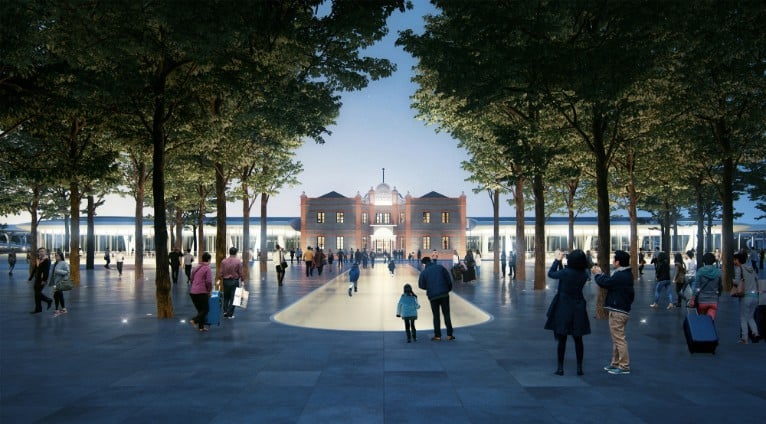
China’s train stations are competing to be bigger than one another. Standing tall in the city like grand palaces, they are surrounded by large main roads, imposing viaducts, and often empty plazas. Rather than this pursuit of grand, monumental architecture, is it possible for urban train stations to create their own beautiful environment, with comfortable scales, and a blend of transport and urban functions that are both efficient and humane? Is it possible for train stations to be more than a stopover for travelers, but an urban public space that people can enjoy? - Ma Yansong
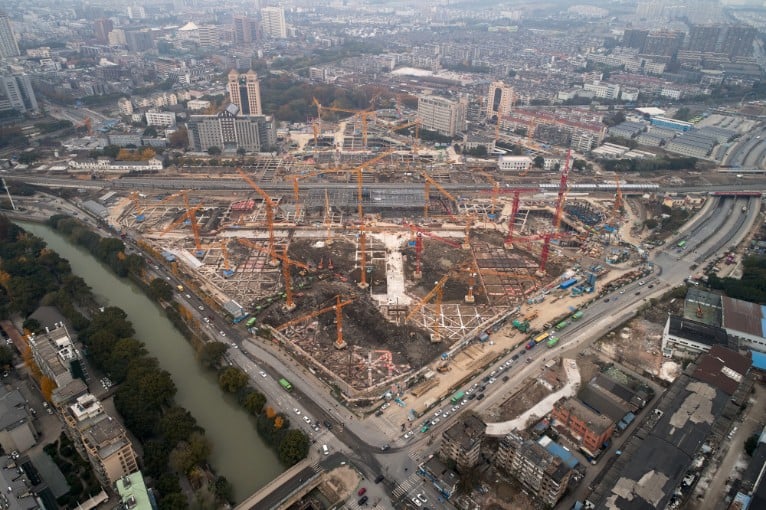
MAD’s proposal places the busy transportation junction underground, freeing the ground floor of obtrusive infrastructure, thus allowing the People’s Park to radiate through the scheme into the city, and form an urban oasis. A careful consideration to landscape and massing has formed an axis with the reconstructed old station building at its core. In front of the station, a large collection of canopy shaped trees have been planted, creating comfortable, natural shades for the plaza.
Upon completion, the scheme will become a “borderless park” where citizens and travelers can dwell and enjoy the beautiful natural environment. In contrast with the busy infrastructure beneath, the park will be a place of comfort and quiet, bringing the city center back to the people.
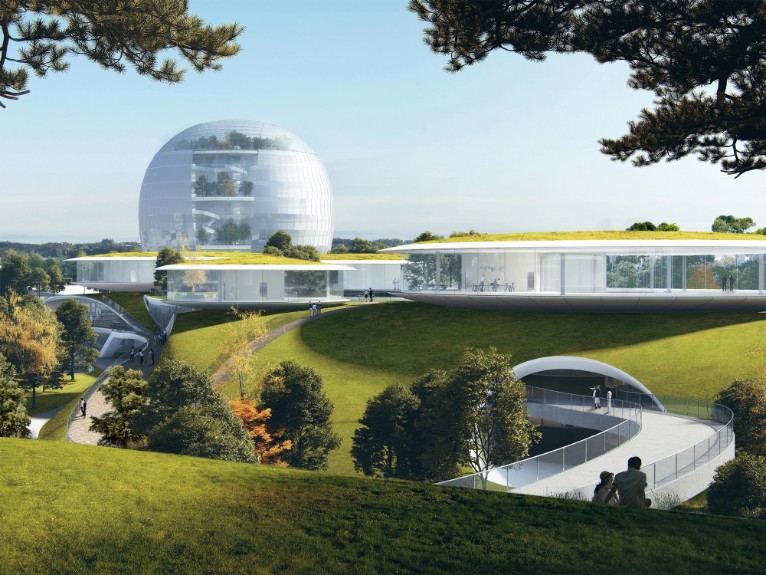
Looking south along the central axis, the rebuilt station building and the “floating” metal roof of the new station will blend with the forest trees. The station concourse, platforms, and waiting hall are hidden underground, while the building’s single-story height above ground level humbly respects the scale of the old station building.
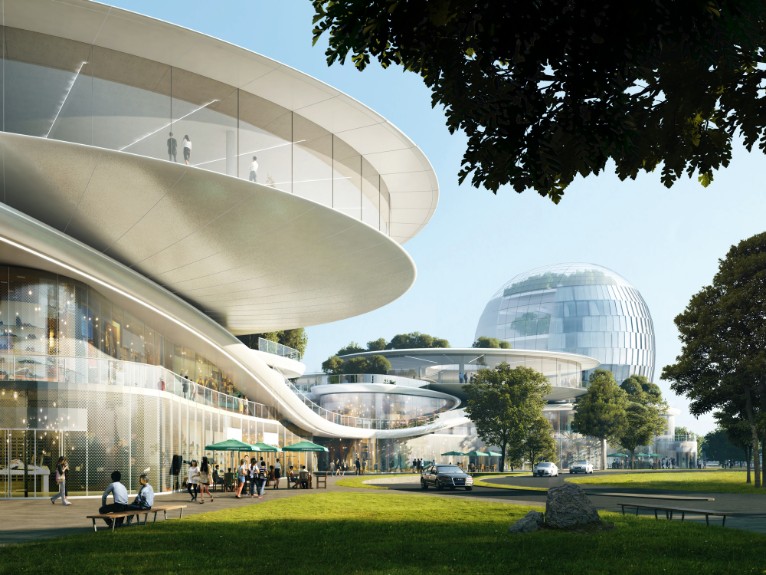
On the roof of the new station, solar photovoltaic panels will be installed to enhance the project’s sustainability.
Beneath the urban oasis, a wide variety of functions and services are connected with each other. For instance, visitors at street level can efficiently enter and exit the transport hub, while others meander through the park, visit the railway museum, or explore the commercial area before embarking on their train journey.

The capacity of the train station will be upgraded to three platforms serving six tracks, in contrast to the previous three platforms serving five tracks, with the main upline and downline becoming two arrival and departure tracks respectively. The overall passenger capacity is expected to reach 5.28 million people per year, with peak-time capacity reaching 2,300 people per hour.

_______
All images courtesy of © MAD architects




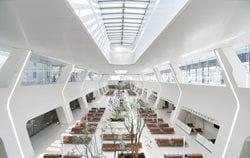 22
22
comment